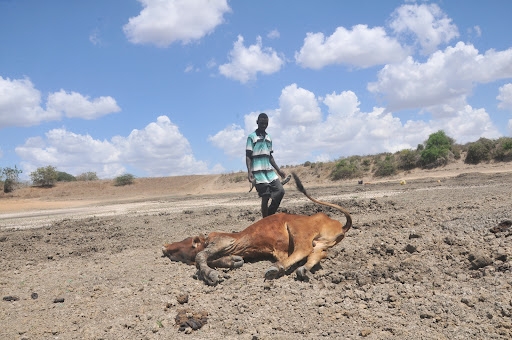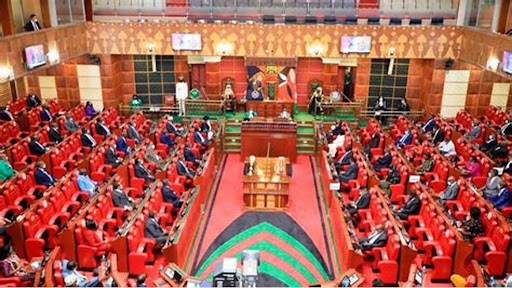Politics, as one David Easton hypothesized, is all about having power to allocate resources and values in a society, just to paraphrase.
It then becomes a vicious competition to attain power, and every politician has the right to give it a go, even for the topmost office in the land — the presidency. Nobody can blame opposition leader Raila Odinga for his struggle for power from as far back as 1982.
There is a certain theory that persists amongst a section of Kenyans that Raila has always won elections but has always been robbed. Repetition, being a key political communication tactic, has facilitated the institutionalisation of this awkward theory among Raila’s followers.
The vehicle Raila has rode for years on the road to becoming a significant player in Kenyan politics is populism. He packaged and presented himself as the ordinary people’s guardian for a long time, galvanizing them against the ruling elites and cream of the crop that he condemned as ‘privileged’. He was thus able to lead mass actions, for instance, but we cannot condemn him for this, as he is a politician.
Raila has excelled in hoodwinking the Kenyan masses that he was in the fray to invert the status quo and provide solutions for problems created by the establishment of the day. This is the commensurate medicine William Ruto, another shrewd politician, served him in August 2022 as the latter defied the odds to become President.
The ‘tyranny of numbers’ — a term developed by political scientist Mutahi Ngunyi in the run up to the 2013 election — showed how a combined vote of the Mt Kenya and the Kalenjin communities would deliver an UhuRuto presidency, and it did. The originator of the theory may have abandoned it in 2022, but it remains a significant argument. The two communities, who heavily voted for UhuRuto in 2013 and in 2017, also voted for Ruto in 2022.
The 2007 general election was different, though. Raila had the Kalenjin community vote to add to other main ones, while Kalonzo denied Kibaki the Kamba vote. If there is an election that Raila may have been ‘robbed’ of, it is the 2007 one.
Oddly, in the 2022 poll, Ruto managed to retain the Mt Kenya vote as the region seemed to retain a strong phobia for Raila. Perhaps they also feared a repeat of the unfortunate events of 2007, and considered political cooperation with the Kalenjin community as the sure bet for peaceful coexistence.
The Kikuyu might also have been unhappy with Uhuru not supporting a candidate from their own community, considering they have historically always supported their own. However, Azimio lacked a good strategy in Mt Kenya and even struggled to recruit there and in parts of the North Rift.
In 2008, Raila settled for the grand coalition government, even as one of his erstwhile defenders then, William Ruto, a key cog in his ‘pentagon’, considered a truce anathema insisting on a rerun. It happened to have been the recommendation of the Kofi Annan-led mediation team who sought to resolve the violent state of affairs.
A plausible theory goes that a pact Raila had signed with part of the Muslim community did not go down well with America and President George Bush Jnr., whose main agenda in the Horn of Africa then was to subdue al Qaeda in Somalia. The US figured that a Raila government would not to be a trusted ally following revelations of the said pact.
The credible claim goes, America pushed for a grand coalition government, and the early endorsement of Kibaki’s win by Michael Ranneberger then was a key indicator of this. Raila should have heard Ruto and stuck his guns for a rerun.
Raila’s acceptance of the truce terms and room in a Kibaki-Kalonzo government was the genesis of his falling out with Ruto. The then Eldoret MP had his eyes on the ball, which was actively forming and being a substantial decision maker in the UhuRuto government in 2013. After 2017, Uhuru tried to muzzle him, but Ruto had grown practical roots, going on to win in 2022.
Kenyans are unapologetic. Society has significantly morphed to wanting business, development, and favourable policy solutions from the government.
Ruto supported Raila in 2007 and worked tooth and nail for him. He did not mind a Raila presidency. So why does Raila not want to allow Ruto to lead?
Instead of asking, “will Raila ever be president?”, Kenyan youths are asking how they can have a piece of tendering business. The society is now absolutely pragmatic. Life has been hard for all and people want to benefit from available opportunities. Nobody wants to live in the past dragging someone else’s political ambition burden.
If Azimio is truly passionate about a progressive Kenya, it should settle for checking the government. The official opposition needs to be created by the law again and anchored in the Constitution. Azimio should develop a clear plan of taking power in 2027 and quit the shenanigans we are seeing currently.
The bane of the Kenyan opposition’s existence, particularly since 2013, is the constant of a candidate who has failed to take power, and who denies the others a chance to go for it. Kalonzo Musyoka, and others should disengage from the Raila yoke and chart their own direction as Ruto did.
Time is now behind Raila, and Ruto knows it.
Unlike Uhuru after 2017, Ruto will not ‘resurrect’ him from his political deathbed. A critical observation is that Ruto supported Raila in 2007 and worked tooth and nail for him. He did not mind a Raila presidency. So why does Raila not want to allow Ruto to lead?












